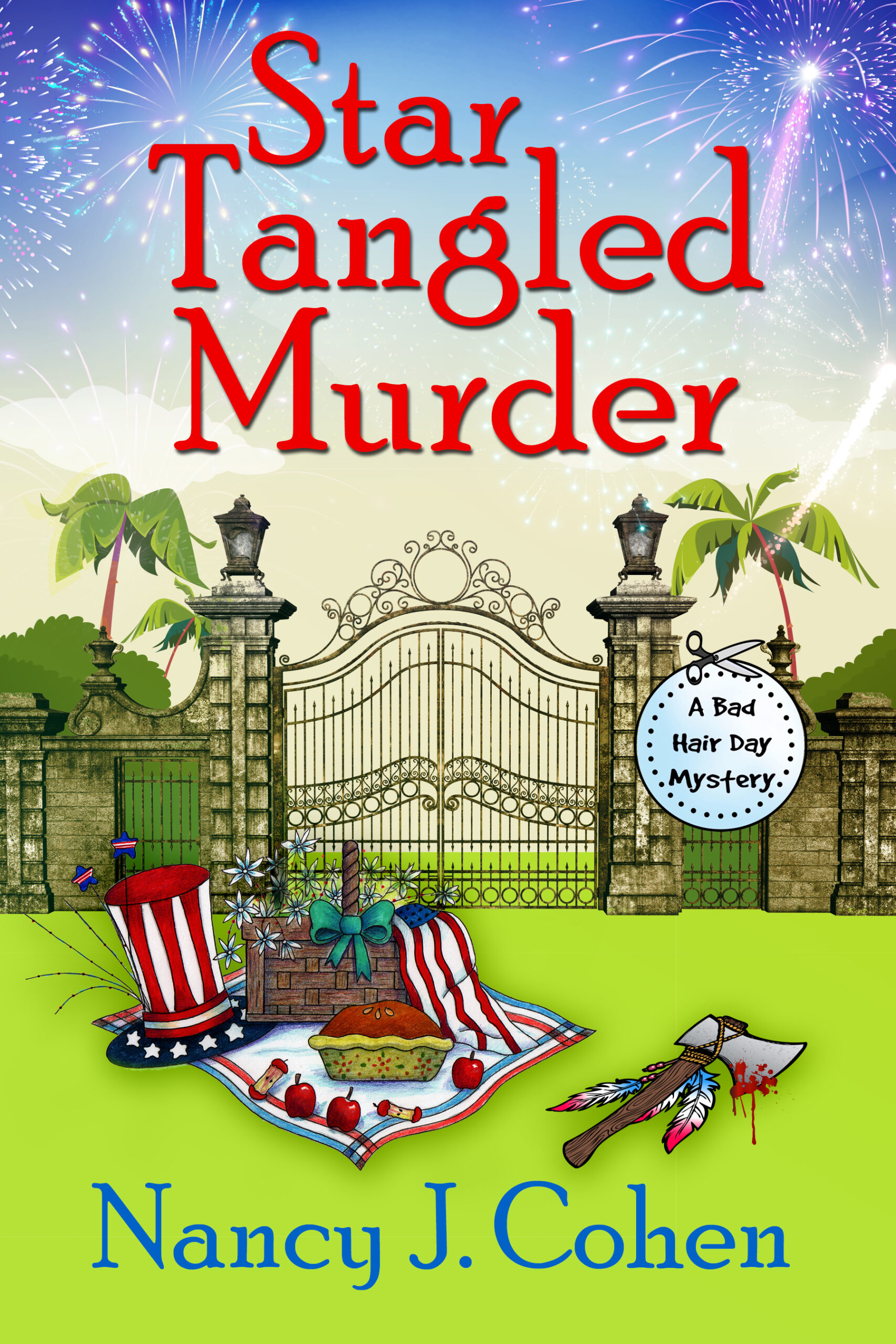How do you keep track of timelines in your work-in-progress? Do you use graphs, charts, or plotting boards to note the days of the week? When I was starting out as a writer, I kept plotting boards. This was a poster board that I divided into blocks representing each chapter. After I wrote a section, I’d fill it in on the poster for a quick visual reference. These days, I use a chapter by chapter outline in a Word file. I’ll still fill it in after I write each segment. I add the days of the week so I can remember what day it is for each scene.
Spoiler Alert! As I was working on EASTER HAIR HUNT, #16 in my Bad Hair Day mysteries, I hit a major snag. The story begins on the day before Easter. It’s March. My hairdresser sleuth, Marla Vail, is seven months pregnant. Her mother wants to plan a baby shower. Meanwhile, Marla is chasing down her missing friend, Blinky, who disappeared after an Easter Egg Hunt at Tremayne Manor.
How much time has passed since Blinky had gone missing? Was it reasonable to think she might still be alive? Uh-oh, I’d better check on the timeline. This realization led me to a plot twist two-thirds through the story.
I’d been concentrating so hard on the storyline, that I had lost sight of the subplots. If Marla is seven months pregnant, when is her due date? I had to go back to the previous book, Trimmed to Death, to figure out when she might have conceived. Then I printed out a set of calendars from https://www.timeanddate.com/calendar/
According to what I read online, Easter Sunday can fall between March 22 and April 25. In 2008, Easter was March 23 and Passover was April 20. Okay, my story will start on Saturday, March 22. By counting the weeks, I figured out Marla’s due date will be June 15.
By now, my story had progressed into April. Her mother could hold the baby shower on April 19, the day before Passover. I penciled in other events involving Marla’s friends and relatives. Now I know exactly what is happening, and when. Had I done this from the start, I wouldn’t have had to go back and change each conversation that mentioned these personal issues. I’d like this story to finish before Marla’s baby shower, so that could be my final wrap scene.
Sometimes you get carried away in the rush of storytelling and have to go back to fill in the details. What’s my advice? Get a calendar and follow your story along so you know which week you’re on and how long the action is taking. Sometimes you’ll read an entire murder mystery that takes place over a weekend. In that case, you’d need to keep an hourly account. Either way, keep track of your timeline from the start and save yourself some time-consuming revisions.
How do you keep track of timelines in your novel? #amwriting #writetip Share on XGIVEAWAY
Enter June 1-18 to win a free mystery from the prize vault at Booklovers Bench
11 thoughts on “Tripping Over Timelines”
Comments are closed.



























Nancy,
This is a blog that resonates with me! I’m almost finished writing my WIP. For once, I wasn’t keeping track of my days of the week, much less of a wedding shower and a library event that take place at the beginning of the next book. Which means I’ll have to fill in the days in when I do my first edits. Next time I’ll pay more careful attention to them and not make this mistake again. Oddly enough, the season in which this book takes place is roughly the same as the book you’ve just described.
Good luck with your revisions, Marilyn. I hope you get everything straight in your next round. It’s so hard to keep track of these subplot events.
When I start, I usually do “Story Day 1” until I need a day of the week. Of course, sometimes, I don’t realize I need that day until too late … like when I had something happening on a Thursday, then backtracked through the manuscript and found that meant my characters were appearing in court on a Sunday. I had to change my character’s days off, which wasn’t too much trouble, but yes, it makes sense to track these things from the start.
Next time I start a new book, I’ll print out a calendar to start. As you say, it would be more helpful to keep track of the timeline from the beginning.
This blog really rang a bell with me, too. I do a time map, identifying on what day of the week/month the event in that particular chapter happened. I need to do this to keep track of what the characters are doing. I recently had to go back into 35 years to figure out when a particular character became pregnant. Fun stuff. Thanks for your blog. I really enjoy reading it.
You dug back 35 years, wow. That must have taken some effort. These timelines can be confusing, especially for a series. That’s whole other discussion, because then you have to keep track of the recurrent characters, too. It’s hard enough figuring out what is happening and when in the WIP.
This was a good post, Nancy. I’ve written one book so far, and whenever the time of day or day itself changed, I wrote it into my draft in all caps, and highlighted it so it would be easy to see and delete later. I confess I was afraid I’d forget to do it if it were on a separate calendar sheet!
I’m more confident as I write my sequel, and I’ll probably run off a calendar to use.
By the way, I have read your book “Writing the Cozy Mystery” twice, and am developing a cozy series. Thank you! It’s a truly helpful book.
Good idea, Robin. And thank you for your kind comments about my book. I am glad you find it to be helpful.
I use an excel spreadsheet with one line for each scene. I have columns for date, time, POV, location, and what happens in each scene.
These are good ideas, Dallas. I’d need all of those except for POV since I’m in one character’s head. I also need to keep track of who said what in a scene as it’s easy to forget.